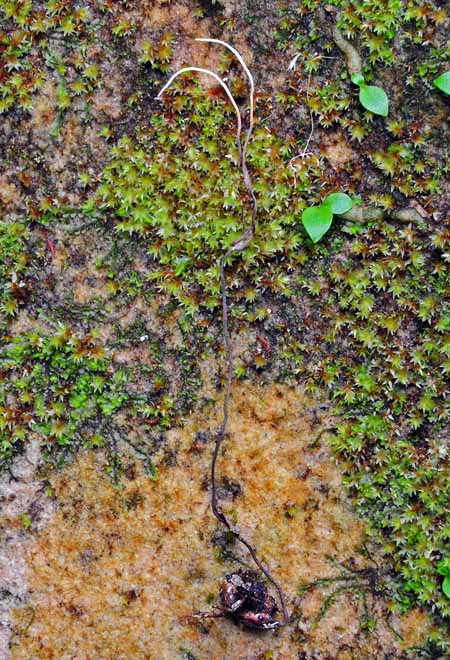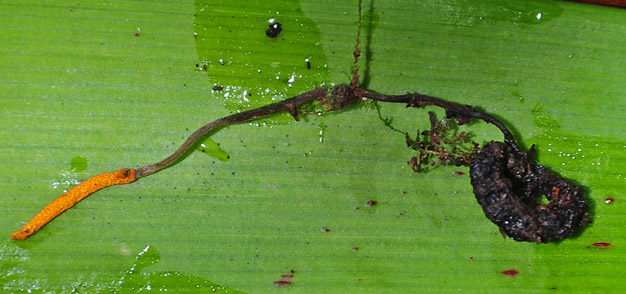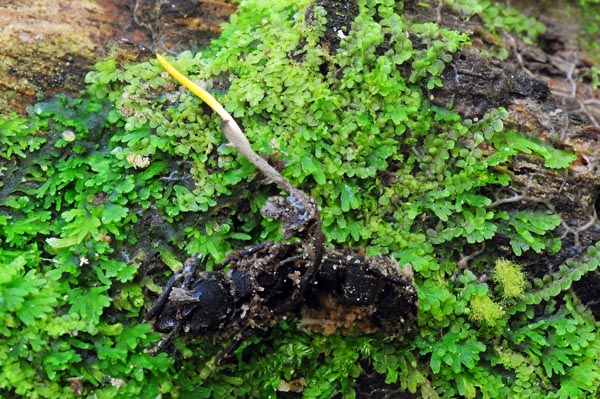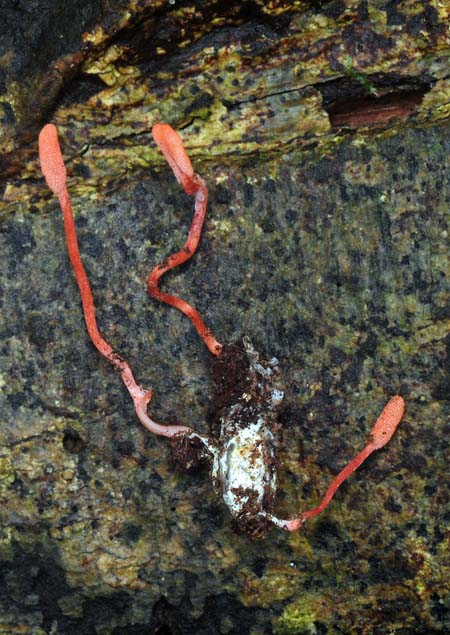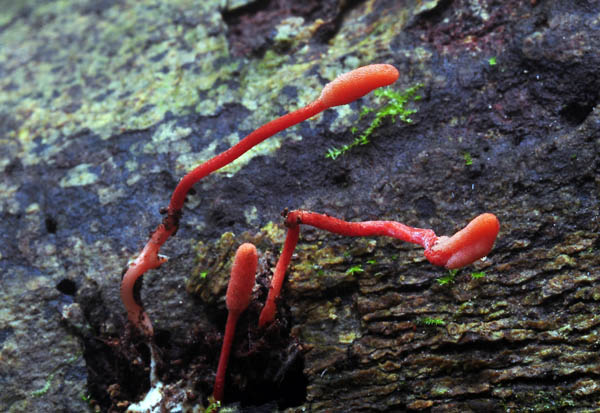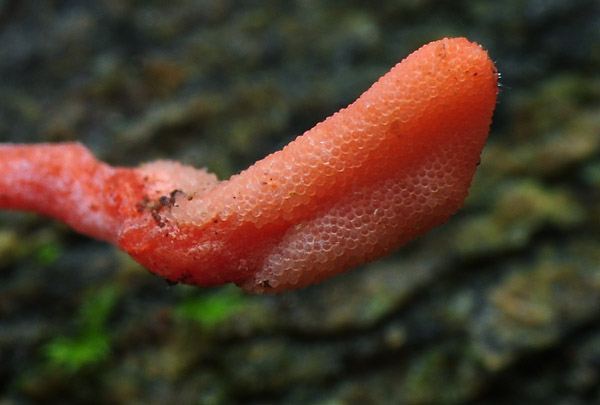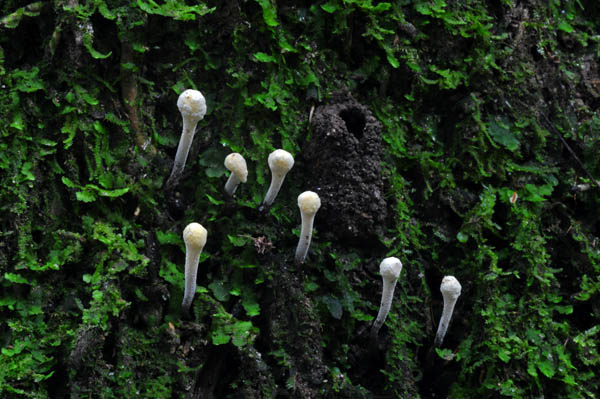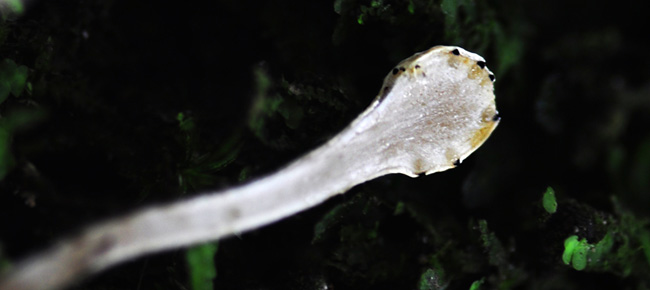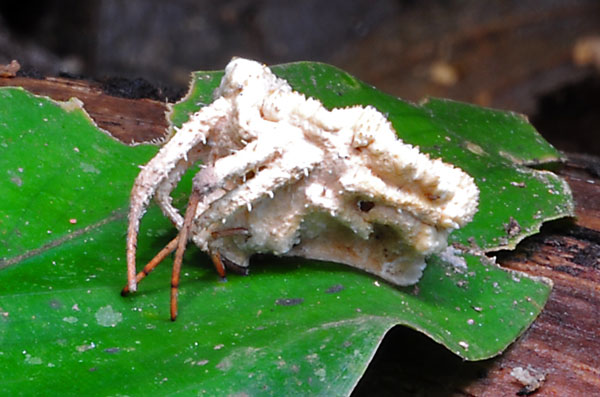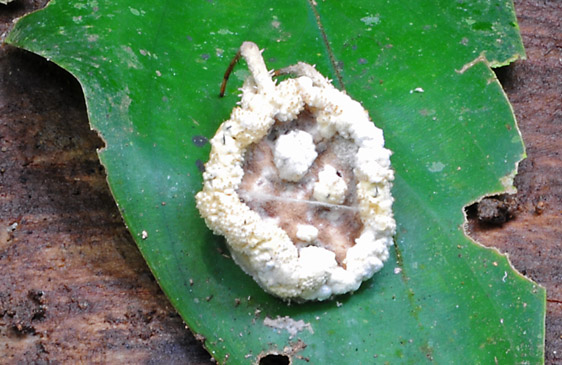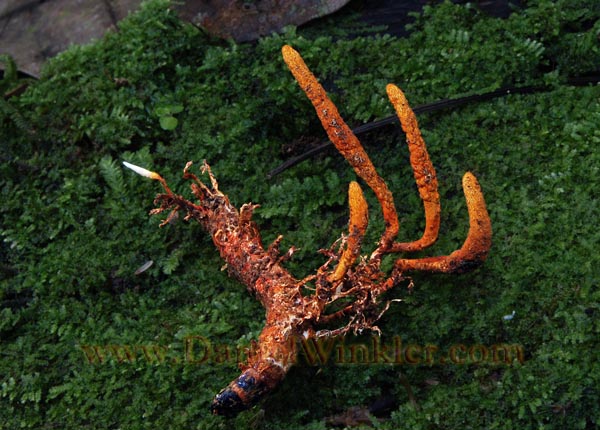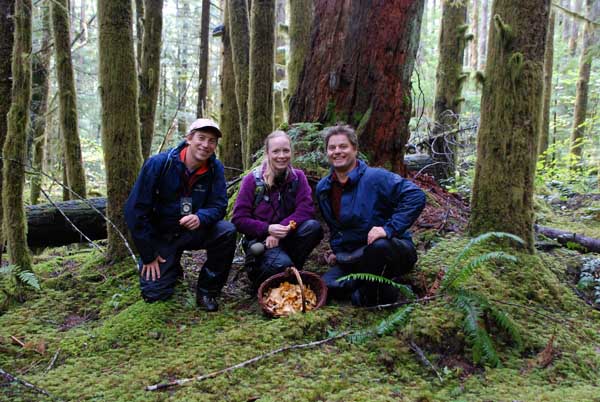2011 - The Year Cordyceps Mushroomed in the Media Landscape
References for an article entitled: "2011 - The Year Cordyceps Mushroomed in the Media Landscape, but did not thrive in Tibet" to be published in Fungi
Sources:
Evans, H.E., Elliot, S.L, and D.P. Hughes 2011. Hidden diversity behind the Zombie-Ant fungus Ophiocordyceps unilateralis: Four new species described from Carpenter ants in Minas Gerais, Brazil. PloS One Vol 4.5, p. 598 – 602. link
Giove, Candice 2011. New Yorkers paying $800 an ounce for worms that promise sexual prowess. NY Post, Jan 16. link
Halpern, Georges 2007. Healing Mushrooms – Effective treatment for today’s illnesses, Square One Publishers. link
Hansen, Eric. 2011 The Killing Fields - The skyrocketing market value of yarchagumba, a rare fungus prized as an aphrodisiac, has led to turf wars—and possibly murder. Outside Magazine, Sept. link
Hoover, K., M. Grove, M. Gardner, D.P. Hughes, J. McNeil and J. Slavicek. 2011. A gene for an extended phenotype. Science 333: 1401. (PDF)
Huffington Post 2011 a. New Zombie-Creating Fungi Discovered (BBC VIDEO) Mar. 2. link
Huffington Post 2011 b. Caterpillar Fungus Transforms Tibet With Huge Cash Influx. Oct 10. link
Hughes, D.P., Andersen, S. Hywel-Jones, N.L. , Himaman, W., Bilen, J and J.J. Boomsma 2011. Behavioral mechanisms and morphological symptoms of zombie ants dying from fungal infection BMC Ecology 2011, 11:13. (PDF)
Hughes D.P., Wappler, T, & C. C. Labandeira 2010. Ancient death-grip leaf scars reveal ant fungal parasitism Biology Letters, 18th August. (PDF) [many more of Hughes’ papers are available at his webpages]
James, Jamie 2010. Nepal's Aphrodisiac War. Men's Journal 137, May. link
Jolly, Joanna 2011. Yarsagumba: Curse of Himalayan Annapurna region. BBC News, Katmandu, Jan 4. link
Matsuyama, Kanoko 2011. Himalayan Fungus Aids Mitsubishi Tanabe Sales With Multiple Sclerosis Drug. Bloomberg, Feb. link
National Geographic Daily News 2011. Photos: "Zombie" Ants Found With New Mind-Control Fungi, Text Matt Kaplan, Mar 3. link
National Geographic Radio Weekend 2011. Feature on Cordyceps - Boyd Matson interviews Daniel Winkler, Apr. 16. link
Paterson, R. M. 2008, Cordyceps - A traditional Chinese medicine and another fungal therapeutic biofactory? Phytochemistry 69: 1469–1495. link
Rundle, Michael 2011. Zombie Animals: Fungi, Insects And Parasites That Resemble The Walking Dead. Huffington Post UK, Mar 10. link
Science Daily 2009. European Evolutionary Biologists Rally behind Richard Dawkins' Extended Phenotype. Jan 19, link
Silverman, Lauren 2011. Caterpillar Fungus: The Viagra Of The Himalayas. NPR, Oct. 9.
Stone Marcia 2011. Parasite gene makes caterpillars do bidding. Decode Science Blog.link
Winkler, Daniel 2008. The Mushrooming Fungi Market in Tibet - Exemplified by Cordyceps sinensis and Tricholoma matsutake’, in The Shadow of the Leaping Dragon: Demography, Development, and the Environment in Tibetan Areas. Journal of the International Association of Tibetan Studies 4. link
Wong YY, Moon A, Duffin R, Barthet-Barateig A, Meijer HA, Clemens MJ, de Moor CH. 2010. Cordycepin Inhibits Protein Synthesis and Cell Adhesion through Effects on Signal Transduction. Journal of Biological Chemistry 285.4: 2610–2621. link
Zimmer 2011. More eldritch ant horror. Discover Magazine Blogs, May 9. link
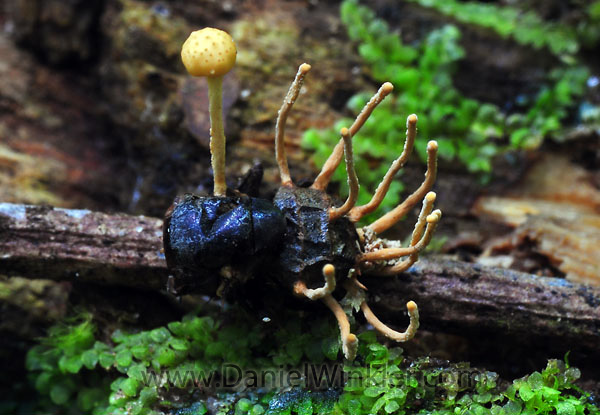
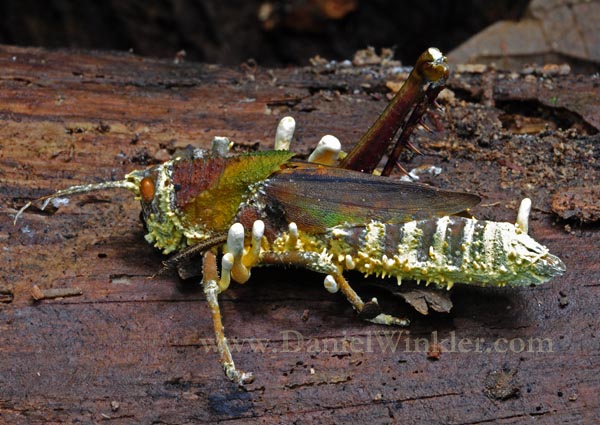
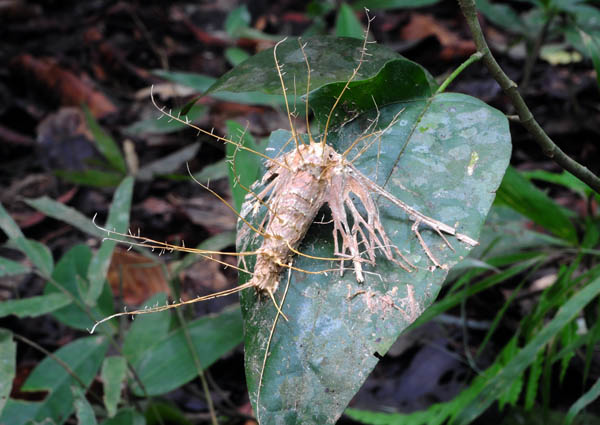
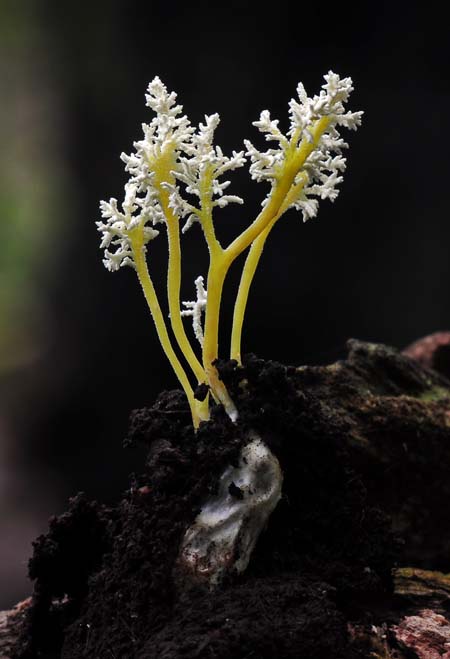



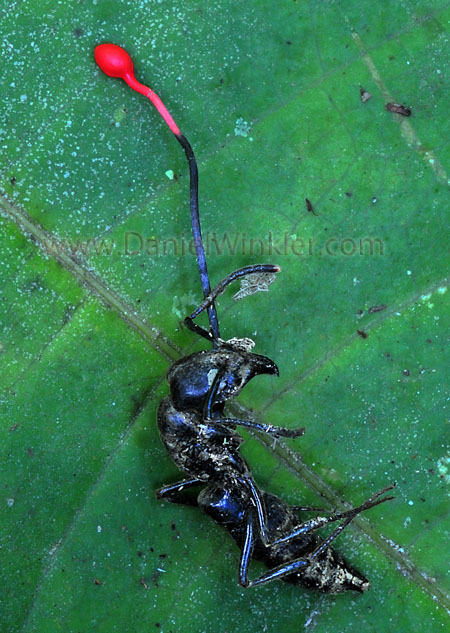
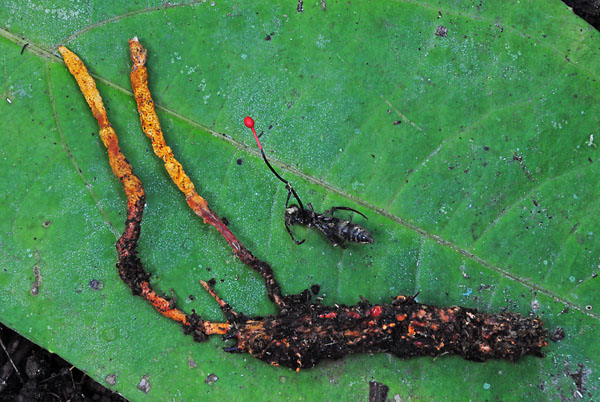
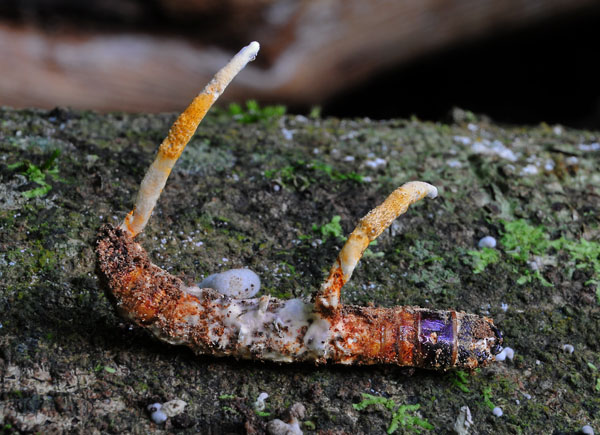
 10a) The yellow area in the center of the stromata contains mature perithecia. The darkish spots are the ostioles, the opening of the perithecium through which the spores are released. The top white part is not fully differentiated yet and still growing. When maturing it will turn yellow too and develop the pimpled surface due to growth of the perithecia.
10a) The yellow area in the center of the stromata contains mature perithecia. The darkish spots are the ostioles, the opening of the perithecium through which the spores are released. The top white part is not fully differentiated yet and still growing. When maturing it will turn yellow too and develop the pimpled surface due to growth of the perithecia.